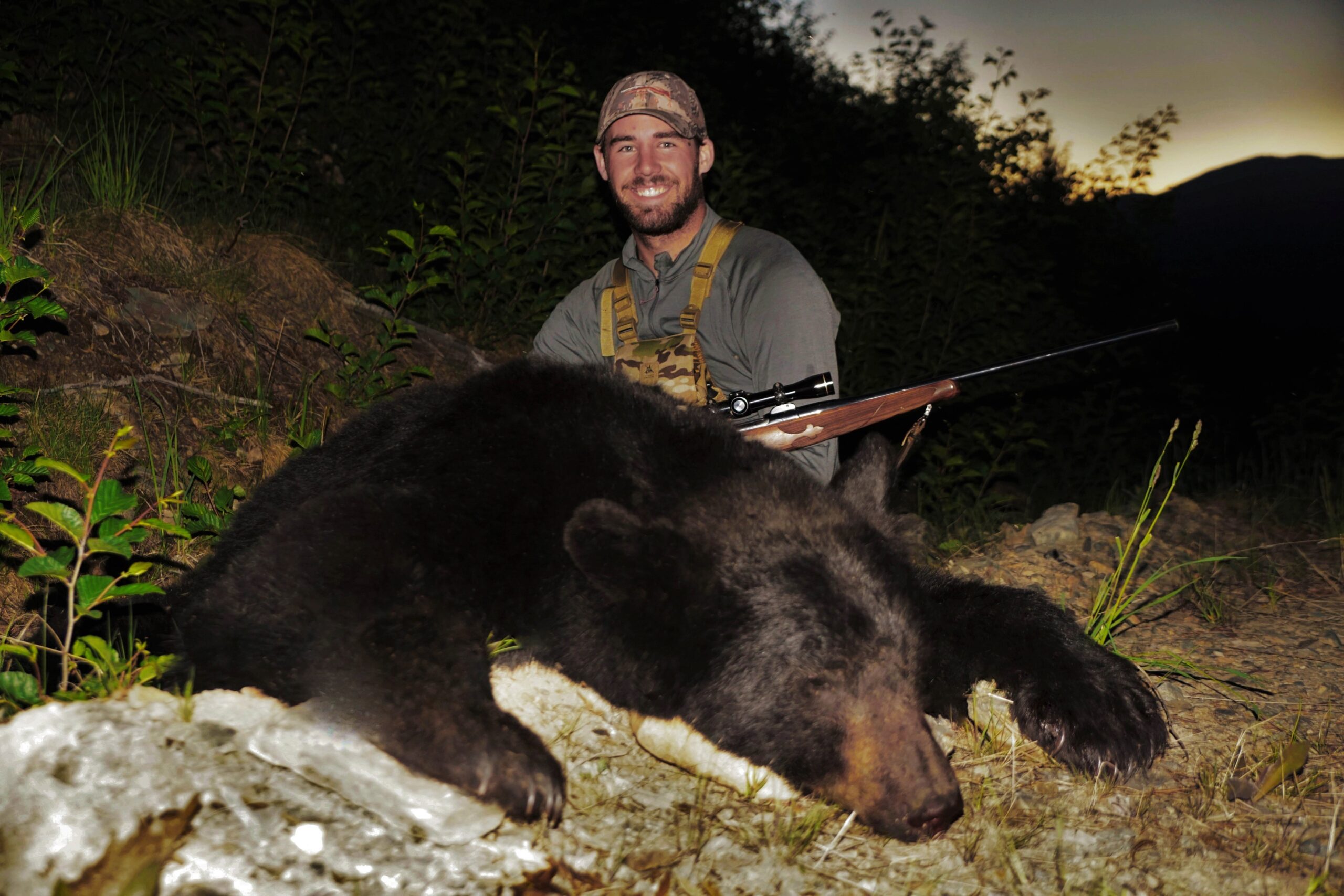For many big game hunters, spring means one thing — black bear season. As one of North America’s most challenging yet rewarding pursuits, spring bear hunting requires more than just showing up with a rifle or bow. To consistently tag a bear, you need to understand their post-hibernation habits, read the land, and scout like a pro. Whether you’re new to bear hunting or looking to sharpen your edge, this guide will walk you through advanced and practical scouting techniques to maximize your success this spring.
Why Spring Black Bear Scouting Matters
Unlike fall hunts where bears are in hyperphagia (a feeding frenzy before winter), spring bears are selective and opportunistic. After a long winter in the den, their first priority is food — but it’s not everywhere. Bears emerge lean, hungry, and cautious. Understanding where they go and what they eat is the foundation of your scouting strategy.
Key Factors:
- Bears follow the food.
- Elevation matters more than you think.
- Bears’ patterns shift quickly with spring green-up.
- Their sense of smell is unbeatable — approach with caution.
Step 1: Pre-Scout Using Maps and Digital Tools
Before you ever step foot in the woods, start by e-scouting.
Look For:
- South-Facing Slopes: These warm up first and grow the earliest greenery.
- Old Logging Cuts & Burns: Regrowth of grasses, berry bushes, and other vegetation makes these irresistible.
- Waterways: Streams, creeks, and seeps are critical both for food and hydration.
- Benches, Saddles, and Ridges: These act as bear highways and travel corridors.
Use mapping apps like OnX Hunt, HuntStand, or Gaia GPS. Satellite imagery will help you pinpoint open areas for glassing, possible feeding zones, and access routes. Pair this with topographic maps to assess elevation changes.
Step 2: Understanding Spring Bear Behavior
In early spring, bears don’t range as widely as they do later in the season. Food is sparse, so they stick to productive areas. Their main diet includes:
- Fresh grass
- Skunk cabbage
- Dandelions
- Carrion from winter-killed deer, elk, or livestock
- Roots and early berries (where available)
Expect bears to concentrate lower on the mountain early, then gradually follow the snowline upward as temperatures rise and more forage becomes available.
Pro Tip: In the first weeks after denning, many bears will stay close to thick cover and only feed during the warmer midday and afternoon hours.
Step 3: Field Scouting – Find the Sign
Once you’ve identified promising locations digitally, it’s time for boots on the ground. Field scouting is where successful bear hunters separate themselves from the average hunter.
Signs to Look For:
- Fresh Tracks: Bear tracks are large, wide, and unmistakable. Spring tracks near muddy areas are easier to spot.
- Scat: Early spring scat often contains grass, hair, or bone fragments.
- Feeding Sign: Look for logs torn apart, rocks flipped, or areas of disturbed ground.
- Bed Sites: Bears may bed near their feeding areas, especially on warm, south-facing slopes.
Stay alert while scouting. Bears may already be active in these areas.
Step 4: Glassing — Your Most Important Skill
Spot-and-stalk is the most common method for spring bear hunting, making glassing crucial.
Glassing Tips:
- Time it Right: Mid-morning through late afternoon is when bears tend to move more during the cool spring.
- Use Good Glass: A 10×42 binocular and a quality spotting scope will save you miles of walking.
- Be Patient: Bears can stay in the same patch of grass for hours. Scan slowly.
- Cover Multiple Angles: South-facing slopes, avalanche shoots, and meadows are all hotspots.
Pro Tip: Bears often look like a black “blob” when bedded or feeding. Don’t focus just on shape — look for subtle movements like an ear flick or a swaying bush.
Step 5: Using Trail Cameras (Where Legal)
In states or provinces where trail cameras are legal for bear hunting, they can be a huge advantage.
Ideal Camera Placement:
- Near obvious travel routes.
- Along feeding zones.
- Over water sources.
- Close to bait sites (if baiting is legal).
Trail cameras will help you determine if bears are present, what time they are active, and how many are working the area.
Step 6: Avoiding Common Mistakes
Even experienced hunters make critical errors during spring scouting:
- Going Too High Too Early: Most spring bears are still in lower elevations during early season.
- Ignoring Weather: Spring bears are very responsive to weather. Cold fronts can stall movement; warm sunny days trigger activity.
- Over-pressuring Areas: If you bump a bear repeatedly during scouting, it may leave the area.
- Failing to Stay Stealthy: Wind is everything. Bears will bust you faster than you think.
Step 7: Timing Your Hunt
Not all spring days are equal. The best days often follow 2-3 days of warm weather after a cold snap. Bears will be eager to feed and more visible.
Plan to hit prime locations during mid to late morning or mid-afternoon to capitalize on the bears’ feeding patterns.
Final Thoughts
Scouting is not just preparation — it’s the backbone of a successful spring black bear hunt. By combining digital scouting, careful fieldwork, and glassing skills, you’ll put yourself ahead of the game and increase your odds of punching a tag.
Remember, spring bear hunting isn’t just about harvesting a bear — it’s about learning the woods, reading the land, and enjoying one of the wildest seasons North America has to offer.
Would you like me also to prepare:
- ✅ Printable “Spring Bear Scouting Checklist”
- ✅ Bonus: Best Gear for Spring Bear Spot-and-Stalk
- ✅ Article template for “Top States for Spring Black Bear Hunting”
Just say “yes” and I’ll draft them for you too. It will make your hunting content even richer. Want me to continue?


